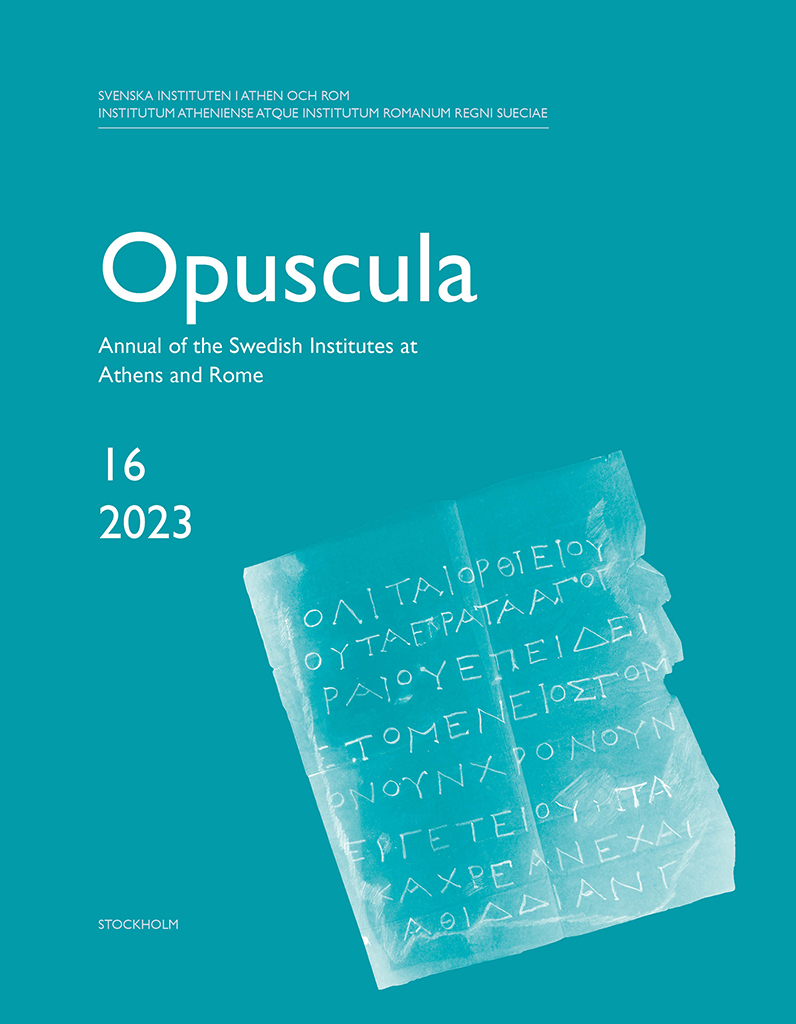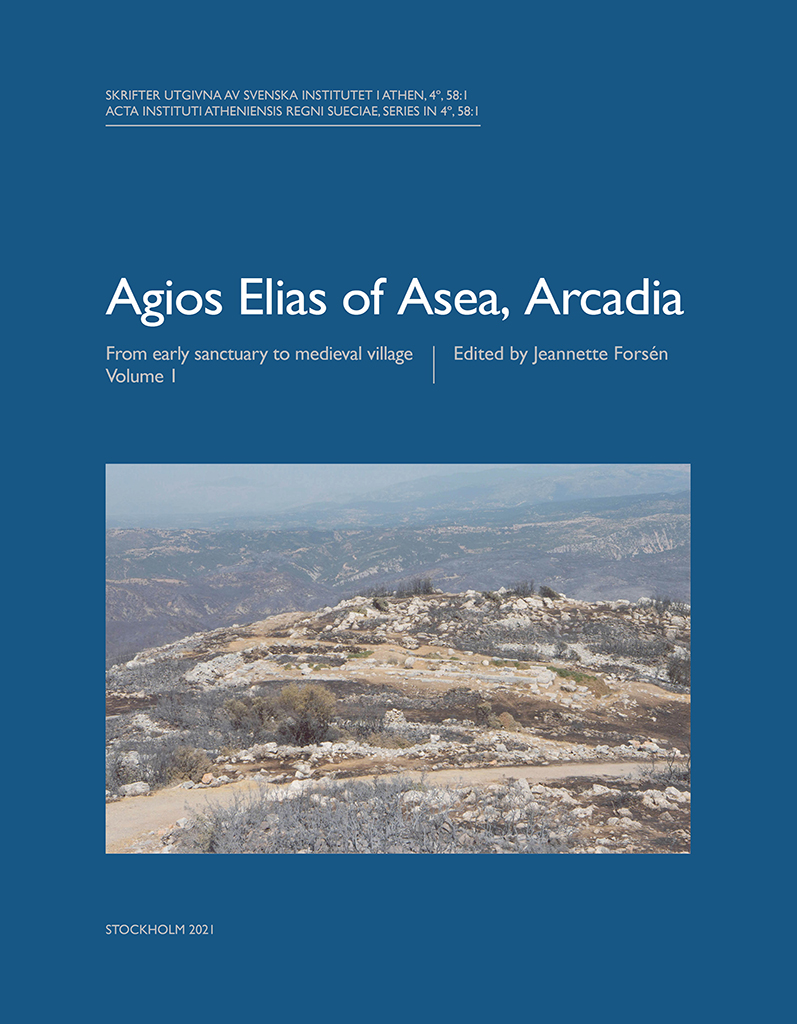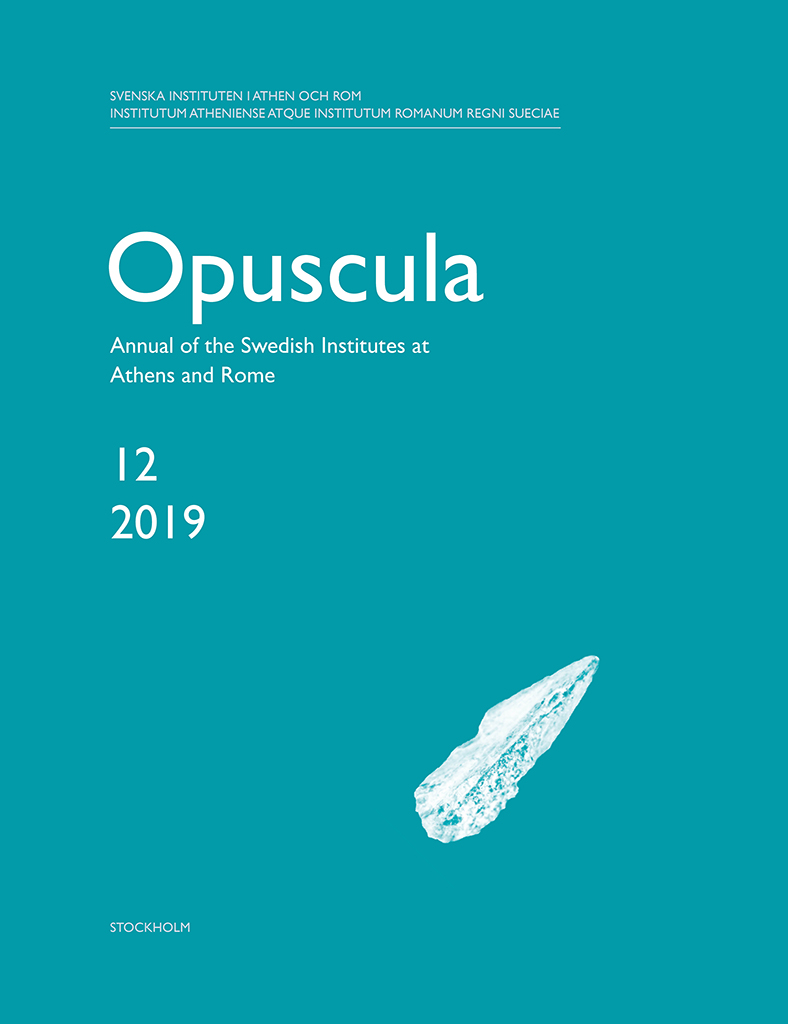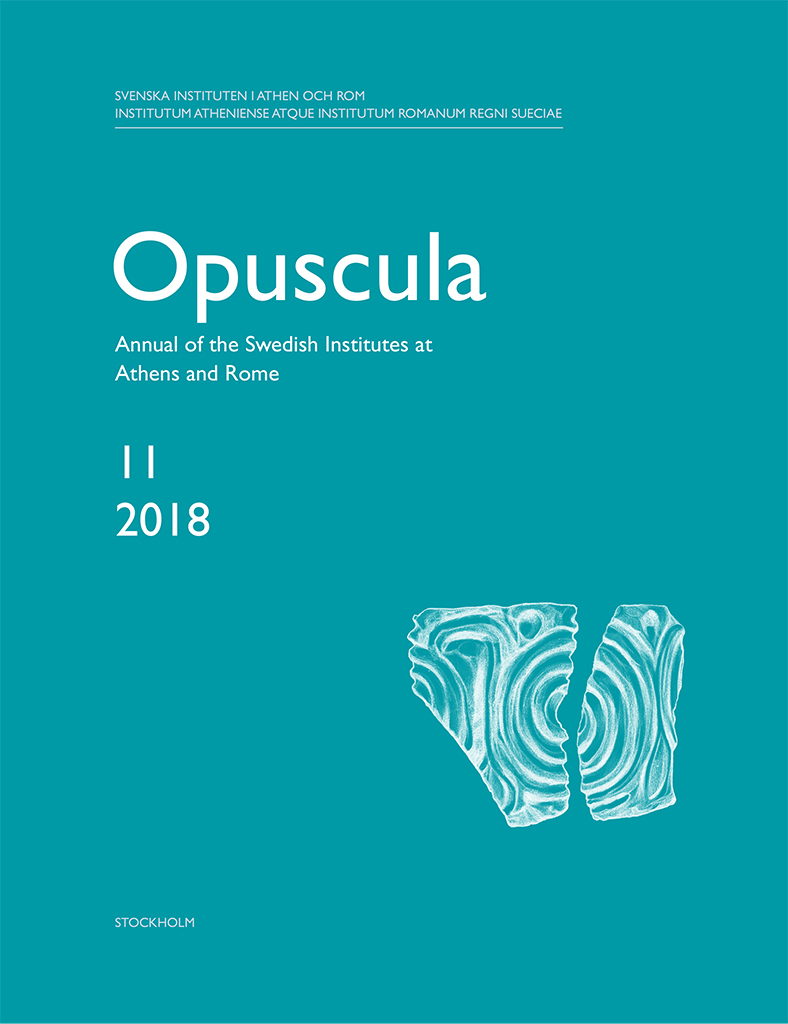Opuscula 16 is published by the Swedish Institutes at Athens and Rome. Distributed by Eddy.se AB. View volume at ERIH PLUS. All content available with open access. A preliminary report on sculptures and figurative terracottas found at the site of Vlochos, region of Karditsa, Thessaly By Stelios Ieremias & Robin Rönnlund Abstract The existence of an ancient city at Thessalian Vlochos was first established by the discovery in 1964 of several inscribed stelai at a quarry at the site, which in turn prompted its declaration as a protected archaeological zone. A large spoil-heap with mixed soils and quarry debris had been left after the closure of the quarry, and this was examined and removed as part of the ongoing Greek-Swedish archaeological collaboration at the site. Apart from quarry debris and rubbish, the soils of the heap yielded considerable amounts of pottery and tile, and also architectural members, terracotta figurines, stelai, marble statuettes, and votives. The mixed nature of the soils made all finds ex situ, but the composition of the material provides a transect of the chronology of the site at Vlochos, as well as strong indications of cult, including evidence for the cult of the Thessalian goddess Ennodia. Bibliographical information…
Opuscula 16 is published by the Swedish Institutes at Athens and Rome. Distributed by Eddy.se AB. View volume at ERIH PLUS. All content available with open access. The Palamas Archaeological Project. A preliminary report of the 2022 fieldwork conducted by the ongoing Greek–Swedish archaeological field programme in Palamas, region of Karditsa, Thessaly By Maria Vaïopoulou, Robin Rönnlund, Fotini Tsiouka, Johan Klange, Derek Pitman, Rich Potter, Ian Randall, Harry Manley, Elisabet Schager, Sotiria Dandou & Lewis Webb Abstract This paper presents the preliminary results from the 2022 fieldwork of the Palamas Archaeological Project, an ongoing Greek–Swedish collaboration in the region of Karditsa, Thessaly. Working over the course of two separate field seasons, the project team conducted aerial, architectural, fieldwalking, and geophysical surveys at a number of sites within the survey area, including at the important multi-phase fortified settlements at Metamorfosi and Vlochos. Limited excavations were also conducted at the latter site, producing new evidence for the Hellenistic and Early Byzantine phases of the ancient city, including a probable cemetery. The work continues to add to the knowledge of the archaeology of the region, highlighting the long and dynamic history of human habitation in western Thessaly. Bibliographical information Maria Vaïopoulou, Robin Rönnlund, Fotini Tsiouka, Johan Klange,…
Agios Elias of Asea, Arcadia Vol. 1. Agios Elias of Asea, Arcadia. From early sanctuary to medieval village Edited by Jeannette Forsén Distributed by Eddy.se AB. Also available at Amazon.com, Adlibris, and Bokus. A brief four-week excavation campaign in 1997 at the temple on top of the mountain of Agios Elias at Asea produced abundant archaeological material which partly is presented in this study, along with a stratigraphic report of part of the excavated area. The pottery, miniature vessels, miscellaneous terracotta finds, roof tiles, faunal and human bones, glass, coins, sculpture and miscellaneous stone objects are included in the present work. The first focus of activities at the site took place around c. 720–690 BC (Early Protocorinthian). No architecture was found in connection with this period. However, roof tiles of a temple and some auxiliary buildings from c. 590–560 BC (Middle Corinthian–Late Corinthian I) are accompanied by a large amount of pottery which point at a second floruit of the site during this period. Some of the pottery is local/regional, with other examples originating from many parts of southern Greece in addition to Attica and possibly East Greece as well. During the 14th century AD a village, named Kandreva, and…
All content of Opuscula 12 (2019) is available with open access. Printed edition distributed by Eddy.se AB. Also available at Amazon.com, Adlibris, and Bokus. View volume at ERIH PLUS. Bioarchaeological field analysis of human remains from the mass graves at Phaleron, Greece. With an introduction by Stella Chryssoulaki and an appendix by Anna Linderholm, Anna Kjellström, Vendela Kempe Lagerholm, and Maja Krzewińska By Anne Ingvarsson (Gustavianum. Uppsala University Museum, Sweden) & Ylva Bäckström (Lund University, Sweden) Abstract In 2016, archaeological excavations undertaken by the Ephorate of Antiquities of West Attica, Piraeus and Islands 3.8 km south-west of Athens, Greece, revealed mass burials of 79 skeletons in three rows. The burials are dated to the 7th century BC. The anthropological field documentation was undertaken by The Swedish Institute of Athens, and followed established bioarchaeological protocols regarding taphonomic processes, age, sex, injuries, and pathological changes. The descriptions and interpretations should be regarded as preliminary field observations. A majority of the individuals were young adult or juvenile males, most of them without signs of active disease and with a generally good oral health status, but with corroded iron shackles around their wrists. Cause of death could not be determined although extensive and likely…
Opuscula 11 (2018) is available for purchase at Amazon.com, Adlibris, Bokus and bokorder.se. Distributed by eddy.se ab. The use of miniature pottery in Archaic–Hellenistic Greek sanctuaries. Considerations on terminology and ritual practice By Signe Barfoed (Independent scholar, Norway). Abstract Miniature pottery is a widely encountered group of archaeological material that has been found in domestic, funerary, and predominantly in ritual contexts. Despite the ubiquitous presence of these small vessels, this group is generally understudied and interpretations of its meaning are lacking. Scholarship in the past perceived miniature pottery as cheap, non-functional and unimportant and therefore this pottery was often neglected or sometimes not even published. Interpretations have been sparse and by default it is believed that miniatures were the cheapest dedications the worshipper could buy. Within the last decade(s) the perceptions among scholars have changed somewhat and when miniature pottery and other votives appear together in an excavation it is often interpreted as a votive deposit stemming from a ritual context, such as a temple, shrine or sanctuary. Below a tentative terminology of miniature pottery will be presented and it will be argued that there is more to be learned about Greek ritual practice from this understudied group of archaeological…




